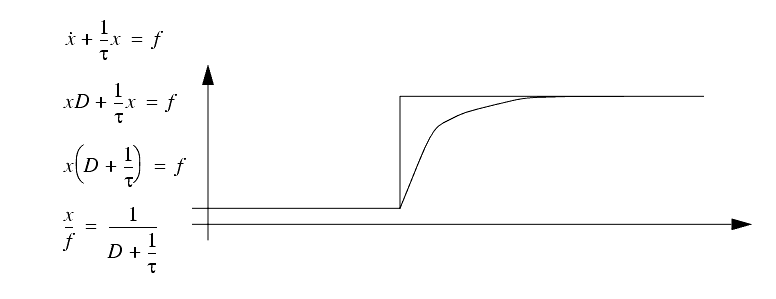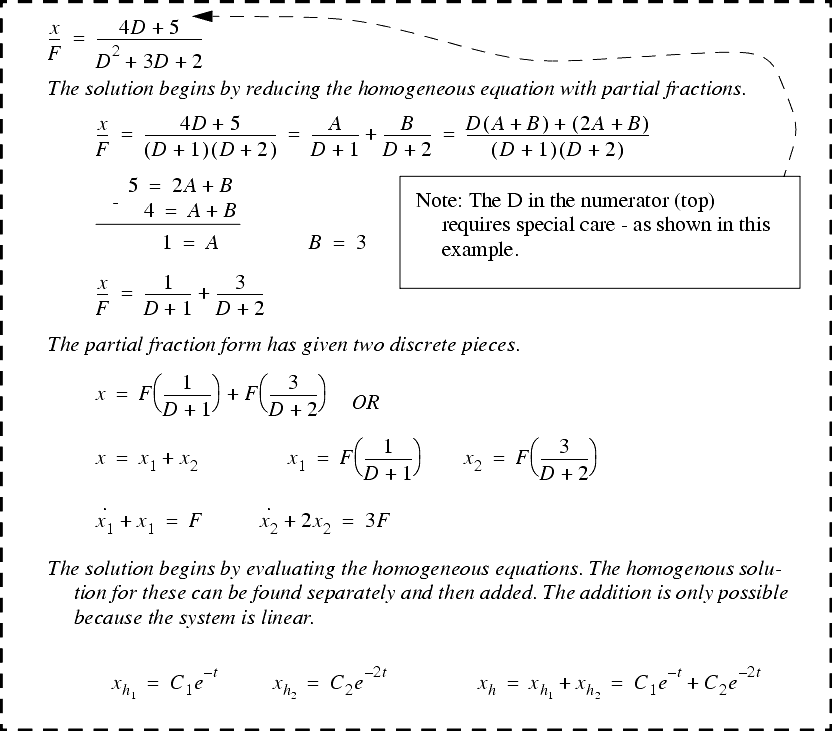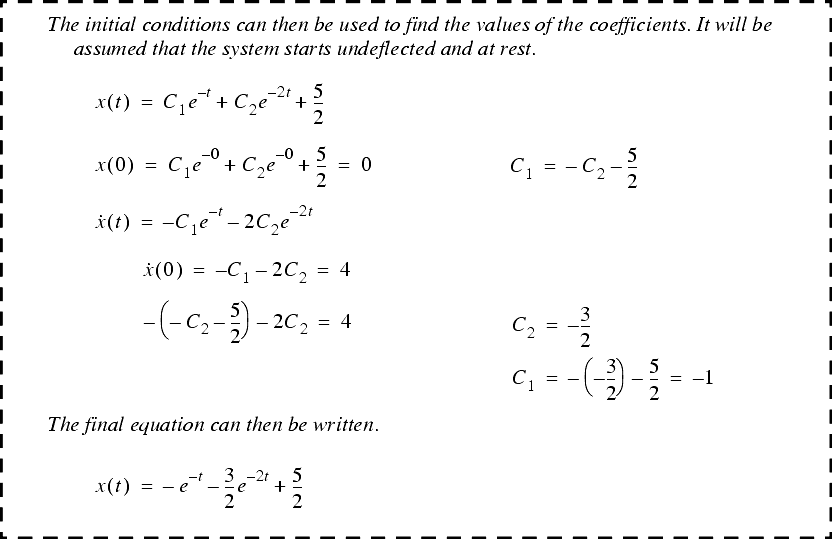6.4 TRANSFER FUNCTIONS
������������
Input-output equations can also be written as a transfer function. The basic form for a transfer function is shown below in Figure 6.10. The general form calls for output over input on the left hand side. The right hand side is comprised of constants and the 'D' operator. In the example 'x' is the output, while 'F' is the input.
Figure 6.10 Example: A transfer function
If both sides of the example were inverted then the output would become 'F', and the input 'x'. This ability to invert a transfer function is called reversibility. In reality many systems are not reversible.
There is a direct relationship between transfer functions and differential equations. This is shown for the second-order differential equation in Figure 6.11. The homogeneous equation (the left hand side) ends up as the denominator of the transfer function. The non-homogeneous solution ends up as the numerator of the expression.
Figure 6.11 The relationship between transfer functions and differential equations for a mass-spring-damper example
The transfer function for a first-order differential equation is shown in Figure 6.12. As before the homogeneous and non-homogeneous parts of the equation becomes the denominator and the numerator of the transfer function.
Figure 6.12 A first-order system response
6.4.1 Integrating Input-Output Equations
������������
A transfer function is in a form suitable for using normal integration techniques. If the non-homogeneous part does not includes derivatives, then the techniques presented in previous chapters can be used. An example of explicitly solving such an equation is shown in Figure 6.13, Figure 6.14, and Figure 6.15.
Figure 6.13 Example: Integrating an input-output equation
Figure 6.14 Example: Integrating an input-output equation
Figure 6.15 Example: Integrating an input-output equation (cont'd)





